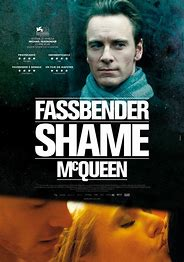Unraveling the Human Psyche
The Silent Language of Shame
Shame, a complex and often debilitating emotion, has been a recurring theme in cinema for decades. It’s a feeling that resonates deeply with audiences, as it is a universal human experience. Movies have the power to illuminate the darkest corners of the human psyche, offering a profound exploration of shame’s impact on individuals and societies.

Shame as a Social Construct
Many films have effectively exposed shame as a social construct, highlighting how societal norms, expectations, and judgments can contribute to feelings of inadequacy and worthlessness. Characters often grapple with the pressure to conform, leading to a deep-seated sense of shame when they fall short of societal ideals.
From classic coming-of-age stories to contemporary dramas, movies have masterfully depicted the struggle to fit in and the devastating consequences of failing to meet societal expectations.
Shame and Identity
Identity is intricately linked to shame. Films have delved into the complexities of gender, sexuality, race, and class, showcasing the challenges faced by individuals who deviate from societal norms.
These movies often explore the internal turmoil and external pressures experienced by characters as they navigate their identities. They highlight the ways in which society’s expectations can create a sense of shame and isolation.
Shame and Morality
Moral dilemmas are a fertile ground for exploring the complexities of shame. Films often present characters with difficult choices, forcing them to confront their own values and the consequences of their actions.
The moral implications of these decisions can lead to feelings of guilt, regret, and ultimately, shame. Movies have effectively captured the internal struggle characters face as they grapple with the weight of their actions.
Shame and Mental Health
Shame is often a symptom of underlying mental health conditions such as depression, anxiety, and eating disorders. Films have played a crucial role in raising awareness about the connection between shame and mental health.
By portraying characters struggling with these issues, movies have helped to reduce stigma and encourage open conversations about mental health.
Overcoming Shame
While many films focus on the painful and debilitating aspects of shame, others offer hope and resilience. Characters who find the strength to confront their shame and rebuild their lives provide inspiration and encouragement to audiences.
These movies showcase the power of human spirit and the possibility of healing and redemption.
The Impact of Shame on Relationships
Shame can have a profound impact on interpersonal relationships. Films have explored the ways in which shame can erode trust, create distance, and damage connections.
By delving into the complexities of human relationships, these movies offer valuable insights into the destructive nature of shame and the importance of empathy and understanding.

The Power of Cinema in Addressing Shame
Through the art of storytelling, films have the power to create empathy, understanding, and connection. By exploring the nuances of shame, movies can challenge societal norms, promote self-awareness, and inspire hope.
As audiences, we have the opportunity to reflect on our own experiences with shame and to gain a deeper appreciation for the human condition.
By incorporating these elements and following the outlined structure, you can create a comprehensive and engaging article that explores the multifaceted nature of shame in cinema.
Would you like to focus on a specific type of shame, such as body shame or social shame, for a more in-depth FAQ?

FAQs
Understanding the Complex Emotion
Q: What is the psychological impact of shame in movies?
A: Movies can effectively portray the overwhelming and isolating nature of shame, helping viewers understand and empathize with characters experiencing it. They can also explore the consequences of shame, such as self-doubt, guilt, and withdrawal.
Q: How do movies depict different types of shame?
A: Movies can showcase various forms of shame, including:
Social shame Arising from public humiliation or embarrassment.
Moral shameLinked to personal values or ethical violations.
Existential shameRelated to feelings of inadequacy or not living up to one’s potential.
Body shame: Associated with physical appearance or bodily functions.
Q: How do movies explore the relationship between shame and other emotions?
A: Films often delve into the complex interplay between shame and emotions like guilt, anger, and fear. They can show how shame can be a catalyst for personal growth or destructive behavior.
Notable Movies About Shame
Q: What are some famous movies that explore the theme of shame?
A: Some well-known films that delve into the complexities of shame include:
Shame (2011): A raw portrayal of sexual addiction and its emotional consequences.
Lady Bird (2017): Explores the teenage experience of fitting in and overcoming self-doubt.
Moonlight (2016): Delves into themes of identity, sexuality, and societal pressures.
The Social Network (2010): Examines the psychological toll of ambition and betrayal.
Q: Are there movies that offer hope and recovery from shame?
A: Yes, many films showcase characters overcoming shame through resilience, self-discovery, and supportive relationships. These movies can be inspiring and provide a sense of hope for viewers.
Q: How can movies about shame promote empathy and understanding?
A: By humanizing characters experiencing shame, movies can foster empathy and reduce stigma. They can encourage viewers to reflect on their own experiences and relationships with shame.
Q: Are there any controversies or criticisms surrounding movies about shame?
A: Some movies about shame might be criticized for their portrayal of sensitive topics or for triggering emotional responses. It’s essential to consider the potential impact of these films on viewers and to engage in thoughtful discussions about their content.
Would you like to focus on a specific type of shame, such as body shame or social shame, for a more in-depth FAQ?
To read more click here